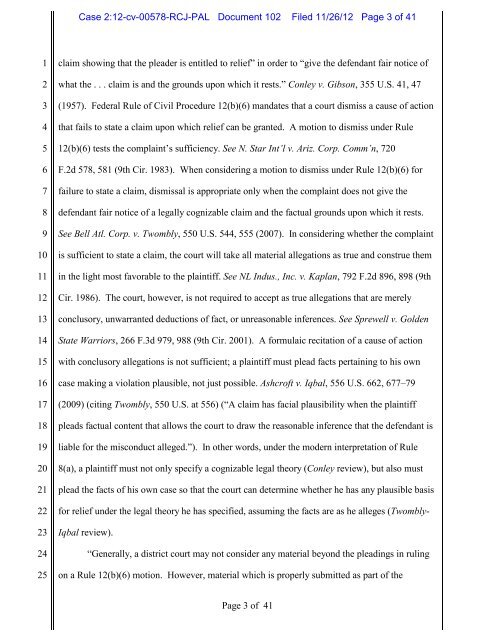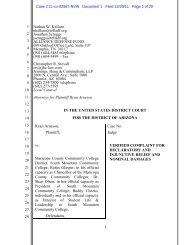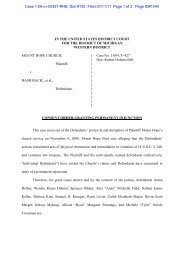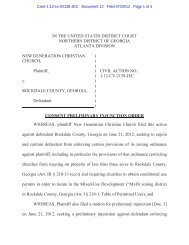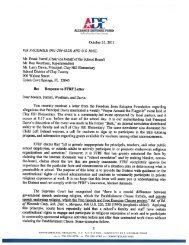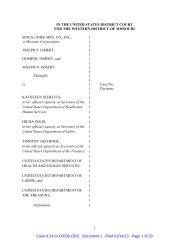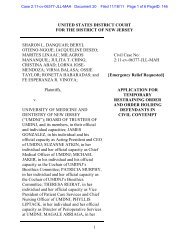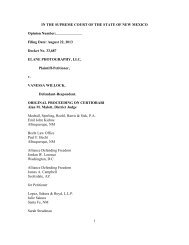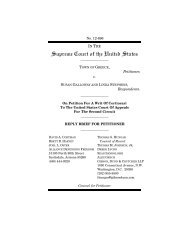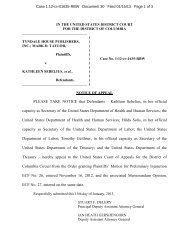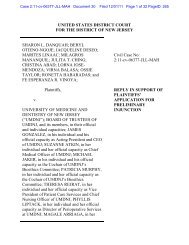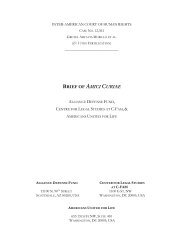ruling by Judge Robert C. Jones - KQED
ruling by Judge Robert C. Jones - KQED
ruling by Judge Robert C. Jones - KQED
Create successful ePaper yourself
Turn your PDF publications into a flip-book with our unique Google optimized e-Paper software.
Case 2:12-cv-00578-RCJ-PAL Document 102 Filed 11/26/12 Page 3 of 4112345678910111213141516171819202122232425claim showing that the pleader is entitled to relief” in order to “give the defendant fair notice ofwhat the . . . claim is and the grounds upon which it rests.” Conley v. Gibson, 355 U.S. 41, 47(1957). Federal Rule of Civil Procedure 12(b)(6) mandates that a court dismiss a cause of actionthat fails to state a claim upon which relief can be granted. A motion to dismiss under Rule12(b)(6) tests the complaint’s sufficiency. See N. Star Int’l v. Ariz. Corp. Comm’n, 720F.2d 578, 581 (9th Cir. 1983). When considering a motion to dismiss under Rule 12(b)(6) forfailure to state a claim, dismissal is appropriate only when the complaint does not give thedefendant fair notice of a legally cognizable claim and the factual grounds upon which it rests.See Bell Atl. Corp. v. Twombly, 550 U.S. 544, 555 (2007). In considering whether the complaintis sufficient to state a claim, the court will take all material allegations as true and construe themin the light most favorable to the plaintiff. See NL Indus., Inc. v. Kaplan, 792 F.2d 896, 898 (9thCir. 1986). The court, however, is not required to accept as true allegations that are merelyconclusory, unwarranted deductions of fact, or unreasonable inferences. See Sprewell v. GoldenState Warriors, 266 F.3d 979, 988 (9th Cir. 2001). A formulaic recitation of a cause of actionwith conclusory allegations is not sufficient; a plaintiff must plead facts pertaining to his owncase making a violation plausible, not just possible. Ashcroft v. Iqbal, 556 U.S. 662, 677–79(2009) (citing Twombly, 550 U.S. at 556) (“A claim has facial plausibility when the plaintiffpleads factual content that allows the court to draw the reasonable inference that the defendant isliable for the misconduct alleged.”). In other words, under the modern interpretation of Rule8(a), a plaintiff must not only specify a cognizable legal theory (Conley review), but also mustplead the facts of his own case so that the court can determine whether he has any plausible basisfor relief under the legal theory he has specified, assuming the facts are as he alleges (Twombly-Iqbal review).“Generally, a district court may not consider any material beyond the pleadings in <strong>ruling</strong>on a Rule 12(b)(6) motion. However, material which is properly submitted as part of thePage 3 of 41


